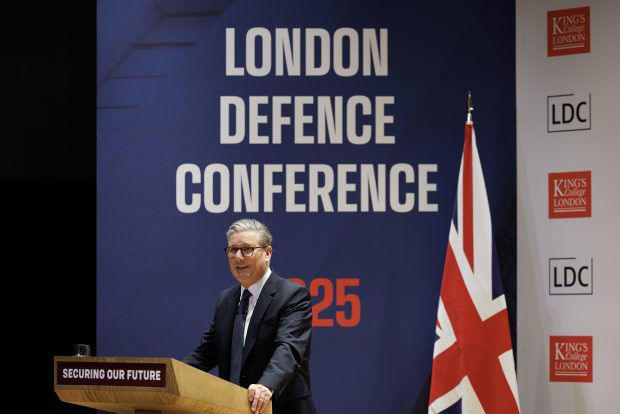UK prime minister pledges ‘defence dividend’ from highest spend since Cold War

Prime minister Sir Keir Starmer said the UK government will cultivate what he called a nationwide “defence dividend” that will boost job creation and opportunity as a result of the country’s increased investment in defence.
During a keynote speech at the London Defence Conference to mark Victory in Europe Day, when the UK and its allies won the Second World War in Europe, Starmer said that the government would make its “largest sustained increase” in defence spending since the Cold War, amounting to an increase of “£13.4bn [US$17.8bn] year-on-year compared with where we are today”.
Starmer said the UK government would use the defence spending to “seize the defence dividend” by using the investment to rebuild the UK’s industrial base and create jobs.
“From the shipyards in Scotland, to the missile systems built in Stevenage and Belfast, the artillery barrels made at Sheffield forgemasters, and the land vehicle development in Wales –mark my words, the British defence industry will be the engine of national renewal,” he said.
He also used his speech to announce a £563m (US$751.2m) contract for Rolls-Royce to maintain a fleet of British Typhoon fighter jets, which he called the “backbone of Britain’s air defence”
“All 130 Typhoons will have their engines maintained by Rolls-Royce, supporting hundreds of jobs in Bristol and beyond.”
Innovation 2026 will be expanding to include a stream on sharing innovation in defence and security. Register your interest to attend Innovation 2026 here.
Defence spending rises across Europe
The UK government has also announced the creation of a new defence innovation unit with the aim of developing what the UK chancellor Rachel Reeves called “sophisticated, innovative kit” to face a world “less certain than it has been for a generation”.
The unit is expected to deliver state-of-the-art technology into the hands of the British armed forces by streamlining pathways to innovation within the UK Ministry of Defence.
The government said when it was announced that the unit would prioritise getting UK companies in a position to “scale up innovative prototypes rapidly by setting out a clear pathway, working with the government, from initial production to manufacturing at scale”.
The UK, which has announced it will increase defence spending to 2.5% of GDP from April 2027, is one of a number of NATO members across Europe have also taken action to beef up their defence spending, following calls from the US Trump administration to boost spending per member by 5% of GDP.
The European Commission has tabled the possibility of relaxing fiscal constraints on defence spending, and has proposed a loan instrument of up to €150bn (US$169bn) to help EU governments invest in their armed forces, missile defence, drones and cybersecurity.
In late April. the Estonian government approved a defence investment programme that is set to raise the country’s annual defence budget to an average of 5.4% of GDP from 2026 to 2029, exceeding Trump’s target.
The commitment amounted to an additional €2.8bn (US$3.1bn) earmarked for Estonian defence over the next four years.
The supplementary defence investment programme, dubbed ‘Kilp’ (‘Shield’ in English), marked what Estonia’s prime minister Kristen Michal called “the largest increase in defence spending in recent history”.
Read more: Estonia exceeds Trump’s defence spending target with 5.4% GDP pledge






















